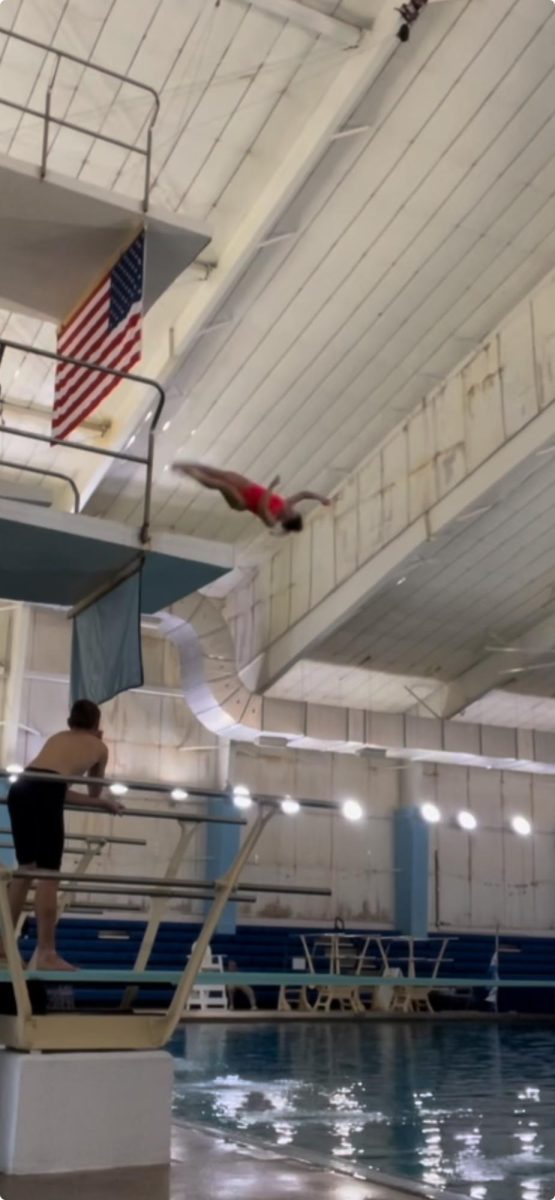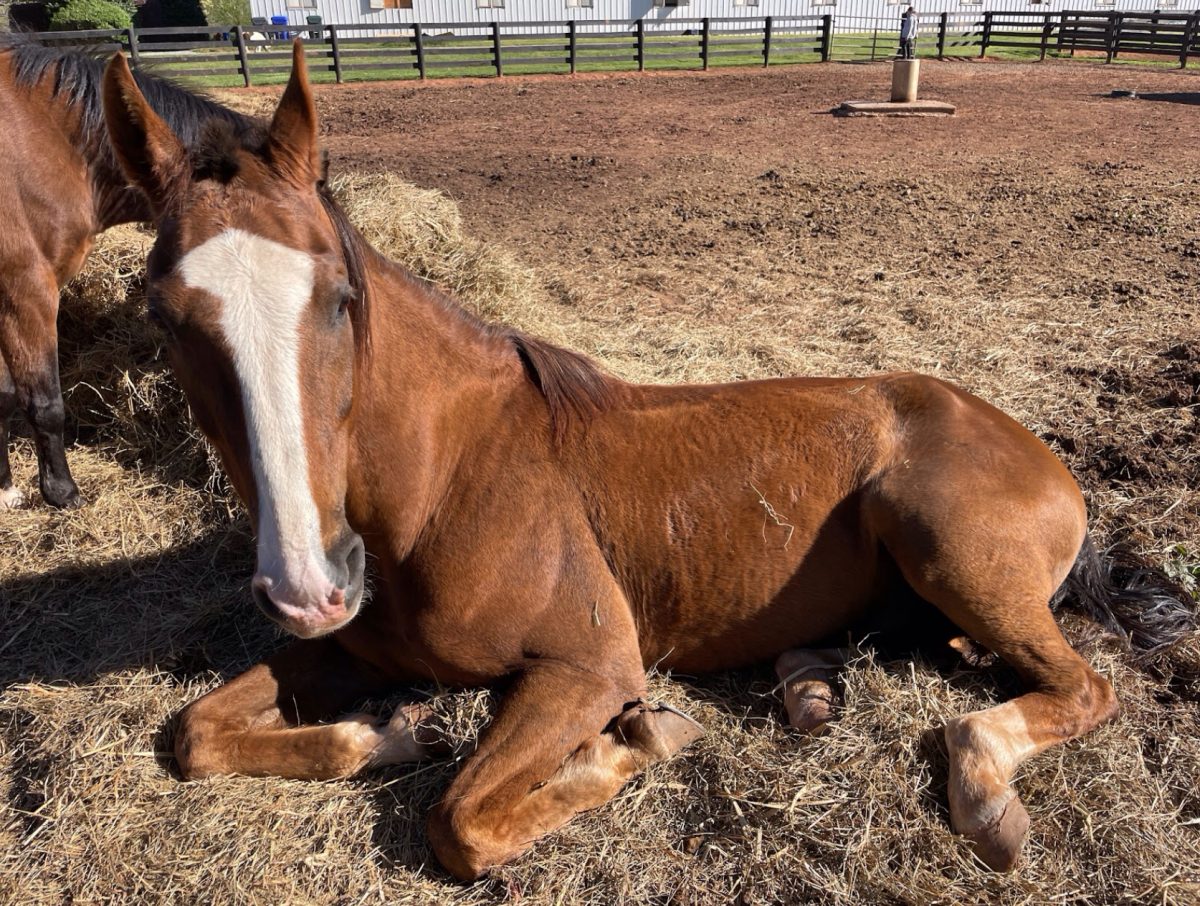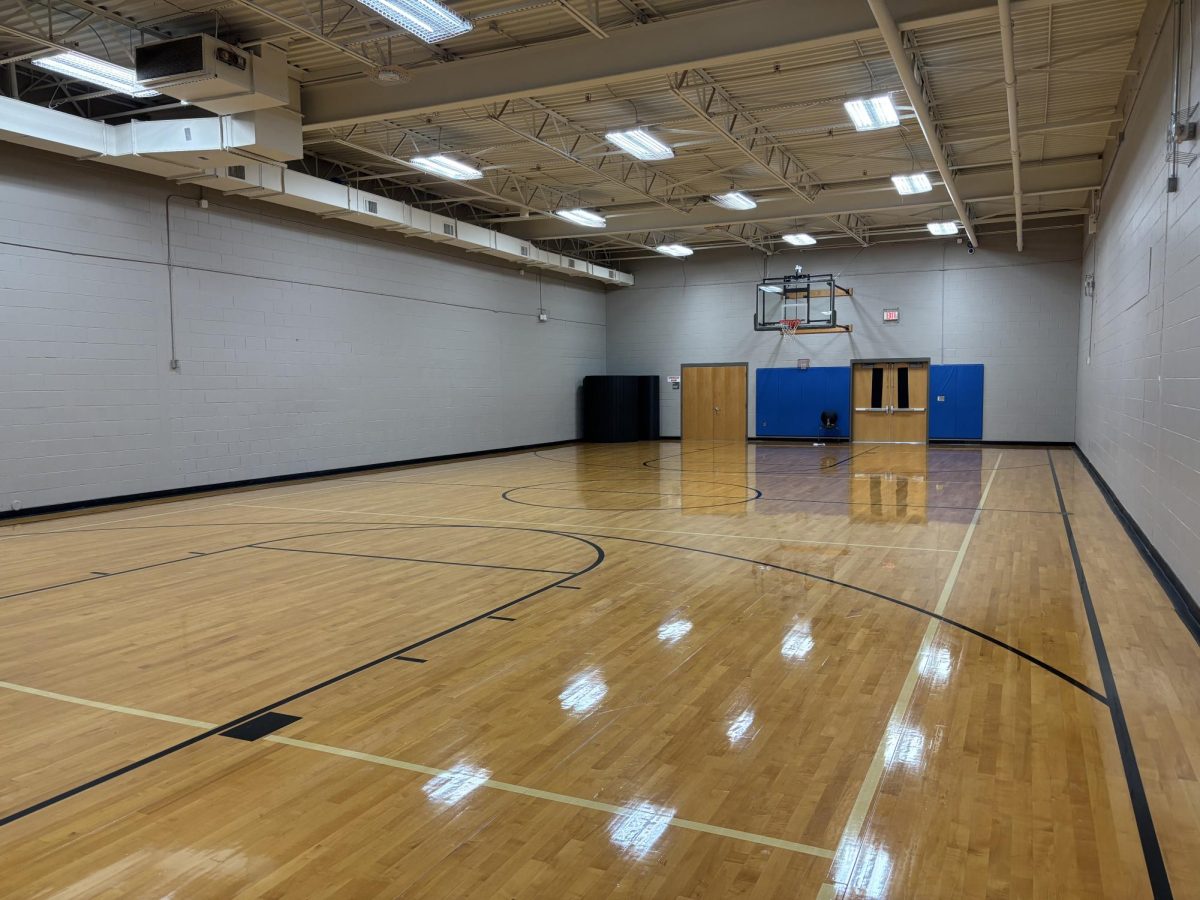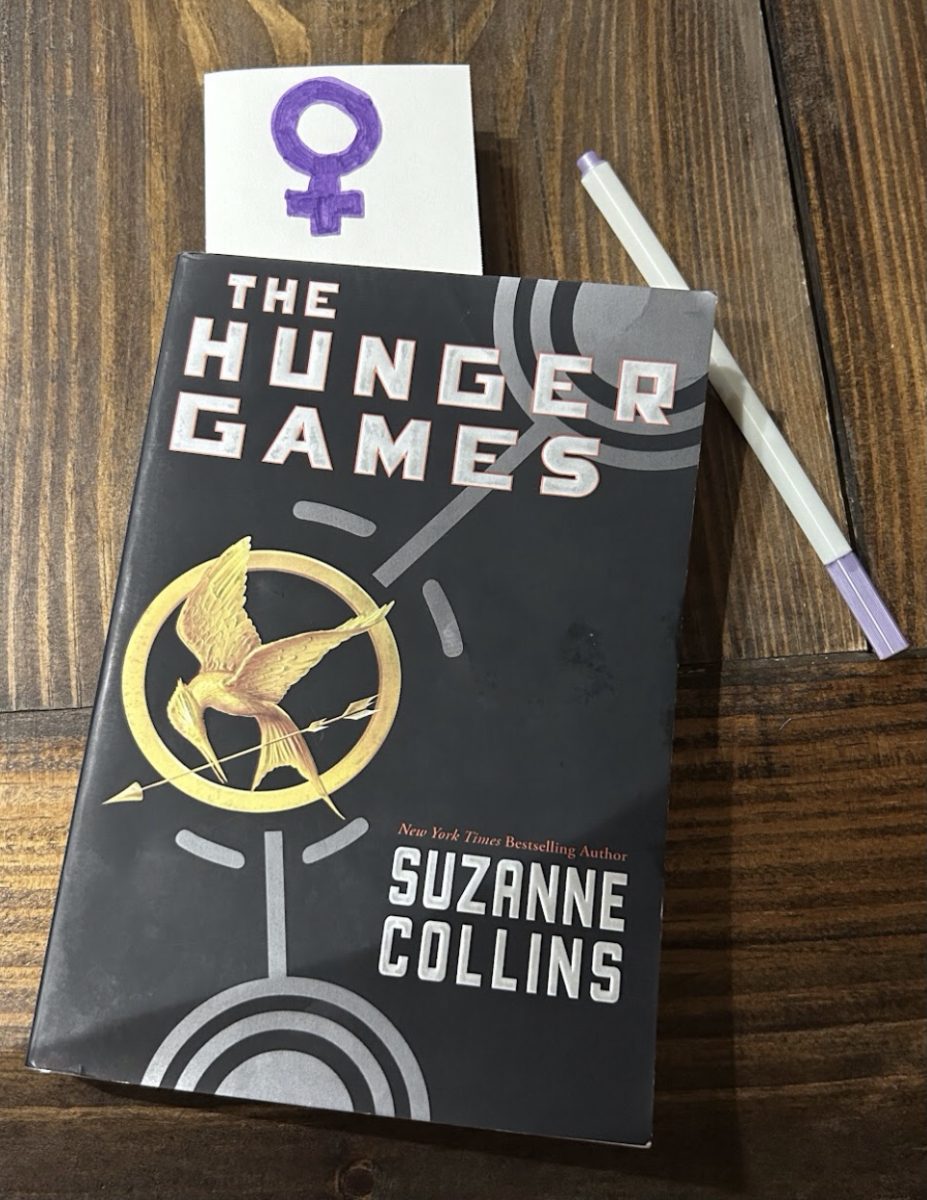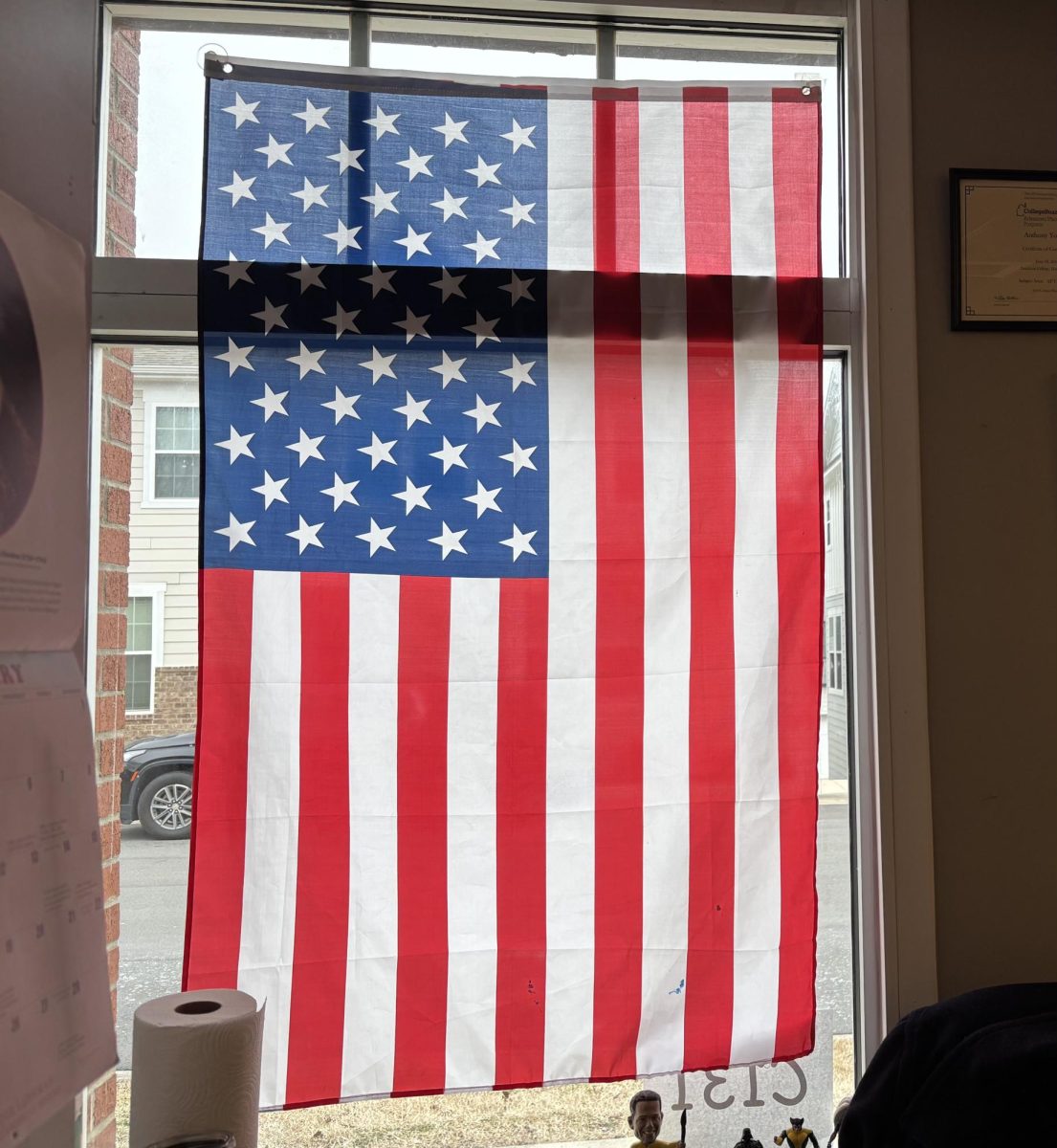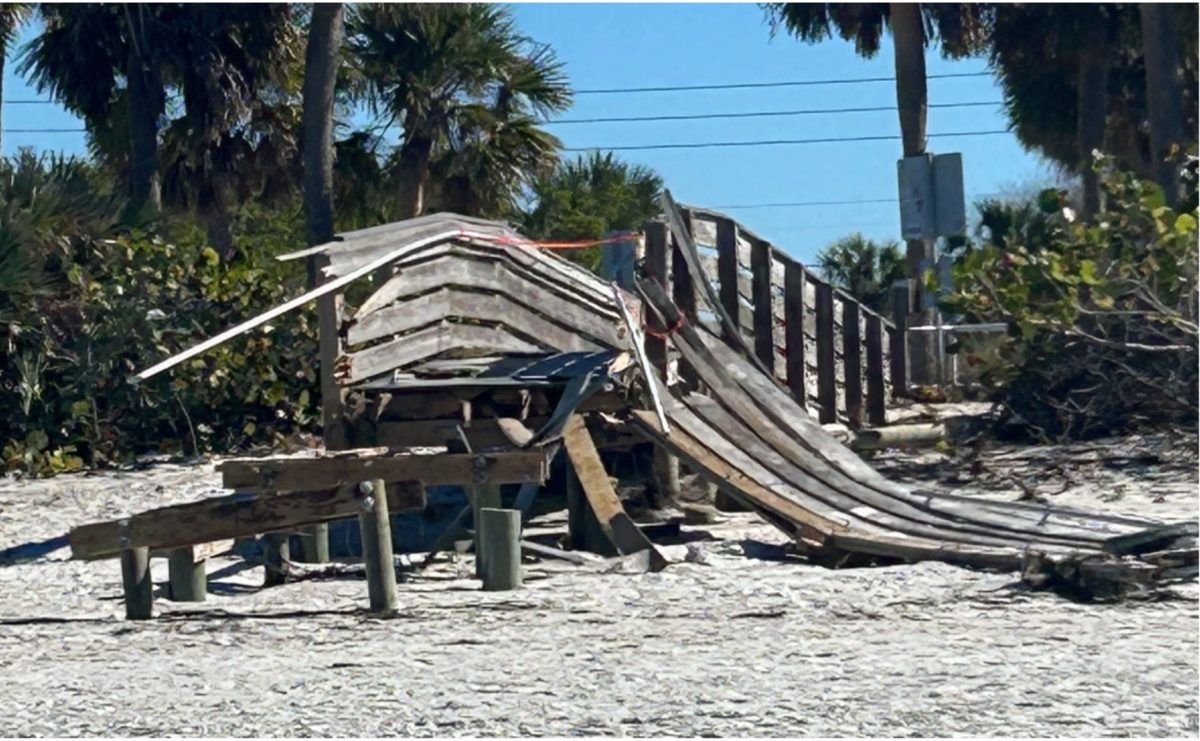My day starts at 5 a.m. when I hop in a cold pool. While most of my high school classmates are still asleep, I’m training. More specifically in these early practices, we focus on lineups or basic dives to perfect the foundations.
I head to school for a full day of classes at Community School of Davidson (CSD). Now in my 11th grade, I’ve only been at CSD since my sophomore year but I am appreciative of my time spent here. Thanks to the administrators for working with me on my schedule, I am able to arrange my classes to allow the time I need for diving.
CSD stands out to me out of the many schools I’ve attended because the staff have been incredibly helpful in assisting not only my academics but also athletics. The school embodies uniqueness and is heavily service-driven.
After school, it’s time for my second practice of the day consisting of harder dives that include more flips or twists and lead-ups for new dives. An hour of this practice is dedicated to dryland: mat drills/strength training, trampoline, dryboard, and belt. The belt is a harness attached to a rope and trolley that allows a person to flip safely off a board or trampoline because they are fully suspended.
A large component in obtaining a new dive is “leading the dive up,” meaning if the dive was a 205c on 3m (back two and a half summersaults tuck) a lead up would be 204c on 1m (back two summersaults tuck). This is crucial to preventing injuries when chucking these dangerous dives for the first time, your body has a subtle feel for it and muscle memory can take over.
After an hour of in-water training, I head to conditioning. Strength training is critical to an athlete’s performance as well as injury prevention. I work with my trainers to curate an hour-long workout focusing on lifting, flexibility, stability and endurance.
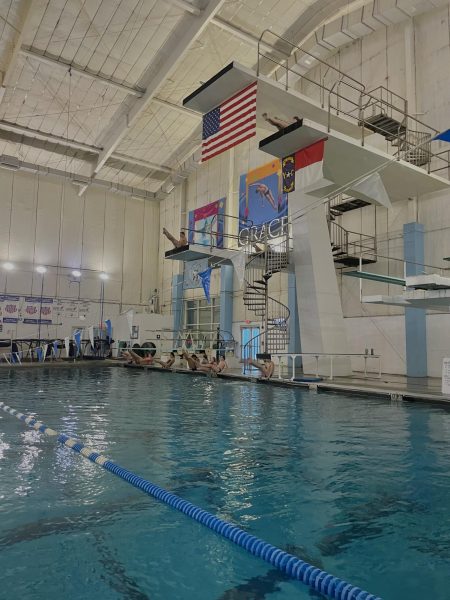
(Avery Nardone)
I return home around 6:30 p.m. and try to fit in hours of homework, a shower and dinner before trying to get any sleep.
The usual response I receive when describing the rigorous grind of my schedule is, “It’s not that deep.” This statement usually comes from people who lack knowledge about the sport and therefore think diving doesn’t require that level of intense training.
Would they say the same thing to a football player? Although the sports are very different and therefore hard to compare, I think the comment stems more from a lack of respect for diving because it is less mainstream. I don’t think it’s personal.
Before diving full-time I was a gymnast. The transition to diving is almost inevitable because the sport of gymnastics often causes athletes to burn out from the immense pressure and intensity leading them to search for a sport incorporating the similar air-awareness required for both diving and gymnastics.
Most young kids dabble in traditional “stick and ball” sports like soccer or baseball. These sports are traditional because of their century-long legacies, accessibility and exposure. The only thing required to play traditional sports is a ball, whereas diving requires materials like springboards, platforms, and a pool, which is not as common across America.
This leads to underexposure in this realm.
”I know it involves jumping off of a platform and flipping then trying to make no splash,” CSD student, Makayla Smith (‘26), said. “Other than that I don’t know much.”
So how did I get interested? I was introduced to diving as a 10 year-old by Heather Carraro, a family friend and former LSU gymnast turned Masters Diver who continues to train at Carolina Dive Academy in Huntersville, North Carolina.
Her path from the beam, floor, vault and bars to the pool happened by chance.
“When I left gymnastics I was a bit lost as it was such a big part of my life for so long. Then I found diving and it showed me there are new things to try,” Heather Carraro said.
Her encouragement is responsible for my entire diving career.
Although I was initially intrigued by the adrenaline rush and thrill that comes with diving, I hadn’t fully recovered from the traumatic and abusive culture of gymnastics that I endured for so long that was manifesting in many mental blocks.
It wasn’t (and isn’t) easy. To pursue another sport at the elite level, I needed to work through my performance anxiety to prevent the burnout I seemed to experience over and over again. After seven years of on-and-off diving, every day I am still forced to learn how to break the cycle of falling in love with diving and then absolutely hating it.
Diving tests a person’s ability to flip and twist off of a board or platform. The level a diver decides to compete is up to them. High school diving is less intense than diving for a club; more of a fun thing rather than something to take seriously.
When I attempt to recruit more people for the dive team I am always met with, “I can’t dive though.” High school diving is about being brave and getting uncomfortable to see what you’re capable of doing. A person learning to dive does not go straight up to 10 meters and attempt three and a half flips, they begin on the deck and then build up both in skill and height.

”Absolutely anyone can dive. It doesn’t matter if you are short or tall, male or female, young or old. Diving is a sport that allows for many different people to enjoy,” Cerraro said.
There are many components to a dive. The hurdle/press or “takeoff” is when everything occurs on the board before you leave it. Flight is everything that happens while in the air. Finally, the entry is the lineup into the water – even continuing underwater – to create the smallest splash possible.
Scoring dives follow a specific format. When competing, a line of judges watch a dive and then hold up a number between 1-10 which is then multiplied by difficulty for the final score.
As for the actual dive choices, depending on age and gender, a diver completes a list of voluntaries, which are usually simpler dives that everyone is required to do, and optionals, which are high-difficulty dives with more freedom.
I believe that everyone should experience the thrill of flipping and overcoming the fear of smacking because it’s extremely redeeming and helps you overcome fear in other areas of your life.
I think that diving should be a more popular sport because I’m certain that if people get over its unpopularity plus some of the negative issues that happen they will enjoy it.
For example, some boys quit because they are picked on for being a diver, as it is not respected the way traditional sports are. It should be because part of diving is overcoming fear daily and that is so important in life. This demonstrates people disregard and downplay things they do not understand, so it is important to love your sport enough to accept the strange response.
Diving is more than a sport, it is an intersection of gymnastics, aquatics and life. It’s an expression of a person’s capability. And it is an art form.
Many of my teammates use practice to escape other problems in their lives and our coaches even give us the option to stay after practice to avoid problems at home.
There is a sense of security in knowing that I always have a place to go.
A person might spontaneously attend a school dive practice and it can end up changing their life.
“Finding a place to dive in college brought me to Charlotte, It’s how I met my wife, and it’s now my career,” Brian McRae, Carolina Diving Academy coach, said. “Diving has provided me with the opportunity to meet people and go places that I wouldn’t otherwise have.”
So, as the winter sports season approaches, consider diving. High school diving isn’t about competing in complex, intense dives, it’s about introducing yourself to the board and getting your feet wet.
“You can learn to dive even if you’re afraid of heights. Diving can be an accessible sport to anyone,” McRae said.
Now, when people tell me “It’s not that deep,” I tell them it is that deep. I am the person I am because of diving, and I would not be that person without it.
Deep means difficult. Deep means rewarding.
The exhilaration of the sport guides me through life and builds up my resilience.
I lead with an open mind and go after truths instead of disregarding things I don’t understand.
I encourage you to dive headfirst, fearless.

